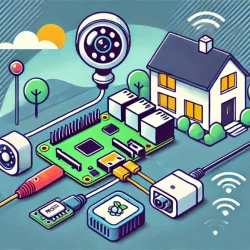How to Keep Children Safe Around Swimming Pools
Most kids love to swim and they don’t care if it’s in lakes and rivers or the pool in the backyard. As a parent, you definitely want your kids to have fun and experience all that the world has to offer; but you are also responsible for keeping them safe, and letting them frolic in the water can definitely pose a serious hazard. Still, you can’t let the risk of drowning hold them back from an activity that can offer them exercise and an important life skill, not to mention a fun way to hang out with friends. And luckily, there are plenty of ways to ensure safety when it comes to allowing your kids to use swimming pools, whether at home or elsewhere. Here are just a few tips that will help you to minimize risks around these small bodies of water.
- Locking gates. If you have a pool in your own backyard it is advisable to install a means of keeping kids out. Many states actually have laws that require homeowners to install fencing and locking gates around pool areas as a way to keep outsiders from getting in. And considering the liability posed by swimming pools, this is a pretty good idea. After all, you don’t want neighborhood kids sneaking in and getting into trouble any more than you want your own kids using the pool area unsupervised. So in a way, adding locking gates for the pool area protects you just as much as your children.
- Supervision. One of the best ways to ensure the safety of kids when they’re in the swimming pools is to make sure that they never use them unsupervised. If they’re at your home, this is easy enough since you can keep an eye on them or deny access when you’re not available. But you should also impress upon other parents that your child is not allowed in their pools without supervision. If that’s a problem, simply give kids money to visit a community pool that has lifeguards on duty at all times.
- Rules. Sometimes it’s not the pool itself that is unsafe, but the surrounding area or even the people using it that are problematic. Since the surface around the pool can be slippery when wet, institute a no-running rule when using the pool area. And let kids know that any rough-housing like splashing, dunking, and diving in the shallow end is a no-no that will end with them having to exit the pool.
- Swimming lessons. Knowing how to swim won’t necessarily stop a drowning incident, since even strong swimmers can get cramps or experience other issues. But teaching kids this necessary skill will at least give them a much better chance of remaining safe when they’re in the water.
- First aid training. You should make it a condition of using the pool that kids must also engage in first aid training courses like CPR. There are all kinds of organizations that offer training in first aid in Perth, Paris, Portland, or anywhere you happen to live, so make sure that kids not only learn how to behave in a safe manner when using the pool, but that they also know how to respond should something go wrong.
More to Read:
Previous Posts:




